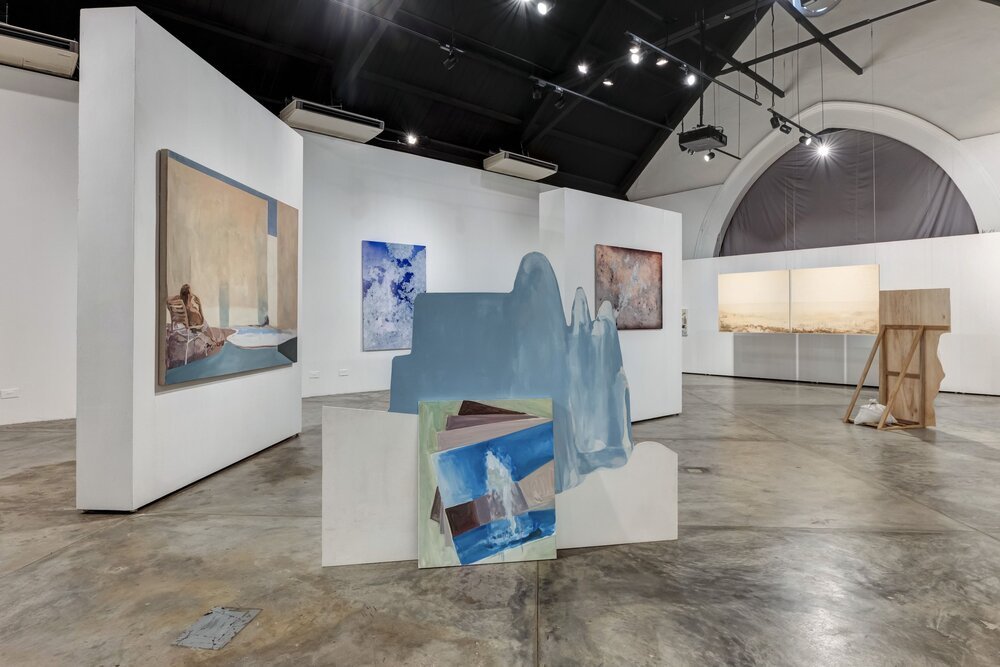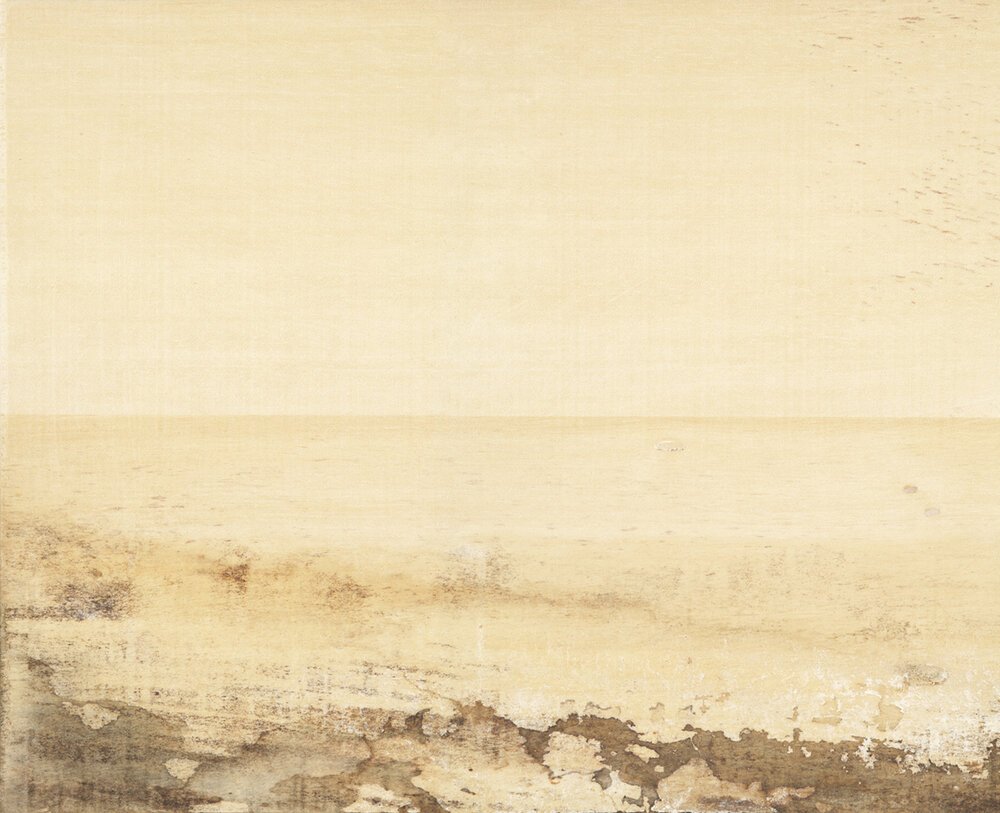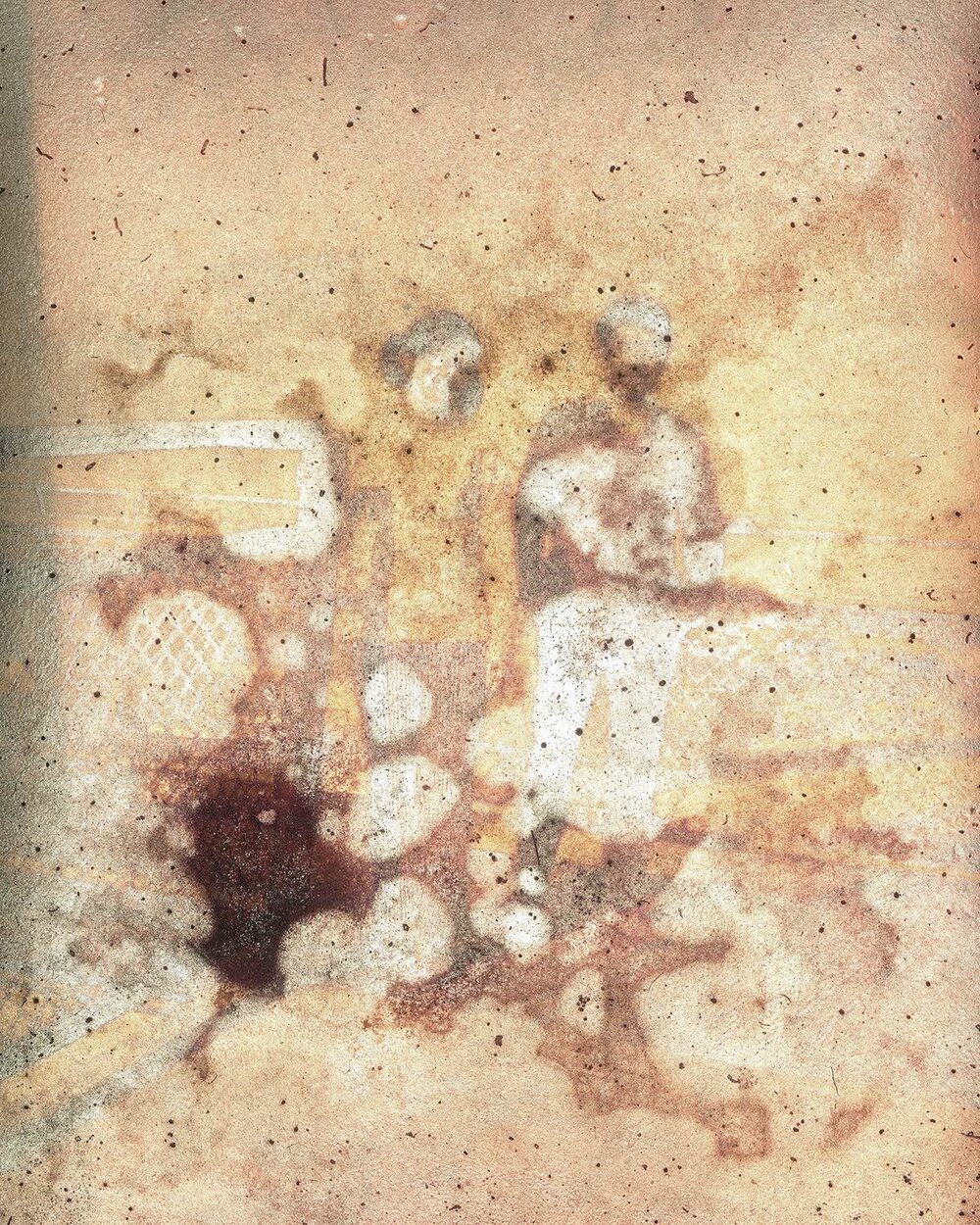Review of ‘Progressive Disintegrations’ at Objectifs
Chua Chye Teck, Hilmi Johandi and Wei Leng Tay in Singapore
By Riley Yuen
Photography is an increasingly accessible art form. However, the convenience of taking a photo at any time with one’s phone makes one wonder how documentation of something through a camera reconstructs the way we view our lived experiences. Furthermore, as images begin to decay and diminish, it is difficult to pinpoint how impermanent photographs and paintings frame our ways of being.
These are the ideas explored in ‘Progressive Disintegrations’ at the Objectifs Centre for Photography and Film in Singapore. It is curated by Marc Gloede, whose practice focuses on relationships between bodies, their lived-in environments, images and technology.
Featuring the multi-media works by artists Chua Chye Teck, Hilmi Johandi and Wei Leng Tay, the exhibition brings together themes of modernisation, shared histories, development and time through photography and painting. It presents a variety of materials, from old images of Singapore, family archive photos spanning from the late 1960 to early 1970s scanned by Tay, the effects of mould on wood as documented by Chua and paintings of constructed paradise by Johandi.
'Progressive Disintegrations' (2020), exhibition installation view at Objectifs. Photograph by Ken Cheong, image courtesy of Progressive Disintegrations.
The different artworks and dividers that occupy the gallery space create a maze, allowing the visitor to choose their own path and encouraging an open-ended exploration. Visual resonances stand out immediately; Johandi’s muted pastel palettes and Tay’s harmonious hues of fuschia and ultramarine punctuate the gallery and visually echo throughout the repurposed church building.
Chua Chye Teck, ‘they landed on the damp spot and started to grow’, 2020, inkjet print, wood, 64 x 107cm. Image courtesy of the artist.
Chua Chye Teck's ‘they landed on the damp spot and started to grow’ (2020) is a collection of haunting prints depicting mould growing on wood panels. The ragged and twisting edges of the mould is reminiscent of crashing waves or a rolling landscape. Chua draws inspiration from things in his environment and this is manifested in his series of prints of different mould formations. From afar, these works look like landscape ink paintings but as one approaches the pieces, the photographed layers of mould and growth become evident against the wood’s grain. And although mould is often associated with filth and neglect, in Chua’s work, it becomes something that is quietly beautiful and marvellously alive.
Wei Leng Tay, one half frame 135mm colour reversal film slide. “Sept. 70” hand-written on Agfacolor branded heat- sealed cardboard slide mount. In Agfacolor-brand orange plastic slide box containing a torn piece of yellow lined paper with the word “Everybody” written in cursive. // Emulsion side up. 150x magnification. Partial coaxial episcopic and transmitted illumination. Cropped. // 100x80cm archival pigment print on Ilford Galerie Smooth Cotton Rag paper. 100x80cm, archival pigment print on Ilford Galerie Smooth Cotton Rag paper, 2020. Image courtesy of the artist.
Wei Leng Tay's prints are film slides from the late 60s to early 70s found in family archives. Due to the decay of the film slides over the years, people and places are unrecognisable and create an eerie ghost-like quality. At first, the blurred silhouettes and their anonymity made these prints seem rather unsettling. Understood together with their titles, I felt rather comforted recognising that at one point, these were images that captured a tender moment or created to remember a person or place. Tay’s unique titles describe the type of print and process of the printing, but also document where they were found and which machinery was used to scan the old film slide. Tay even inscribes the notes left by the previous owners in some of the artworks’ titles. These long descriptions highlight the painstaking work of printing the old film slides. This is emphasised by Tay’s video work ‘One half frame 135mm colour reversal film slide. “I-71” hand-written on Agfacolor-branded heat- sealed cardboard slide mount. In Agfacolor-branded or- ange plastic slide box labelled “TITLE Perth people DATE Sept. ’70.” // 500x magnification. Full ring episcopic and transmitted illumination. Cropped. // Recording at 1080p of image in Keyence WHX_5000 digital microscope HD LCD monitor with Sony A7rii camera and 24-70mm G- Master lens. // 8 min HD colour video, stereo sound’. The long title reflects the meticulous process of making the works, and allows the visitor to reflect on the work and care that have been invested into the various prints displayed around the gallery. The electronic noises from this artwork bounce off the walls of the gallery, and go off with such monotonous repetition that it feels like the beat of time passing.
Hilmi Johandi, 'Landscapes & Paradise: Attractions and Sceneries (Poolscapes)', 2020, oil on linen, 150 x 180cm. Image courtesy of the artist.
In calming planes of faded blues and tan, Hilmi Johandi meditates on paradise and Singaporean historical narratives. In his practice, he frequently examines the effects of development and modernisation. His paintings seem idyllic, but not without a tinge of loneliness. Some of the locations in his ‘Landscapes & Paradise: Attractions and Sceneries’ are identified. He works with images of government buildings, large hotel franchises, poolside scenes and fountain gardens, all evidence of the process of modernism as focuses turn to globalisation and decadence. The artist's paintings encourage the viewer to think more critically about image-making and what it means to commit something to a print or canvas.
“The exhibition finds cohesion through textural resonance, echoes of colour, and the acute awareness of time passing and the world changing. In each artwork there is a sense of something being left behind, and one can see how time simultaneously corrodes and allows things to grow.”
The exhibition finds cohesion through textural resonance, echoes of color, and the acute awareness of time passing and the world changing. In each artwork there is a sense of something being left behind, and one can see how time simultaneously corrodes and allows things to grow. Relating to its title, ‘Progressive Disintegrations’, the show causes one to question whether or not progress necessitates letting go or decay. The pieces, although beautiful in their own right, feel melancholic, acting as memories of something lost or used to be lost. Stepping out of the gallery space, I found myself asking what it is we have left behind as a byproduct of moving forward. Perhaps the significance is not found in what is left, but how it is left and how the future builds upon the past.
'Progressive Disintegrations' is on view from 10 December 2020 to 21 February 2021 at Objectifs - Centre for Photography & Film, Singapore.






